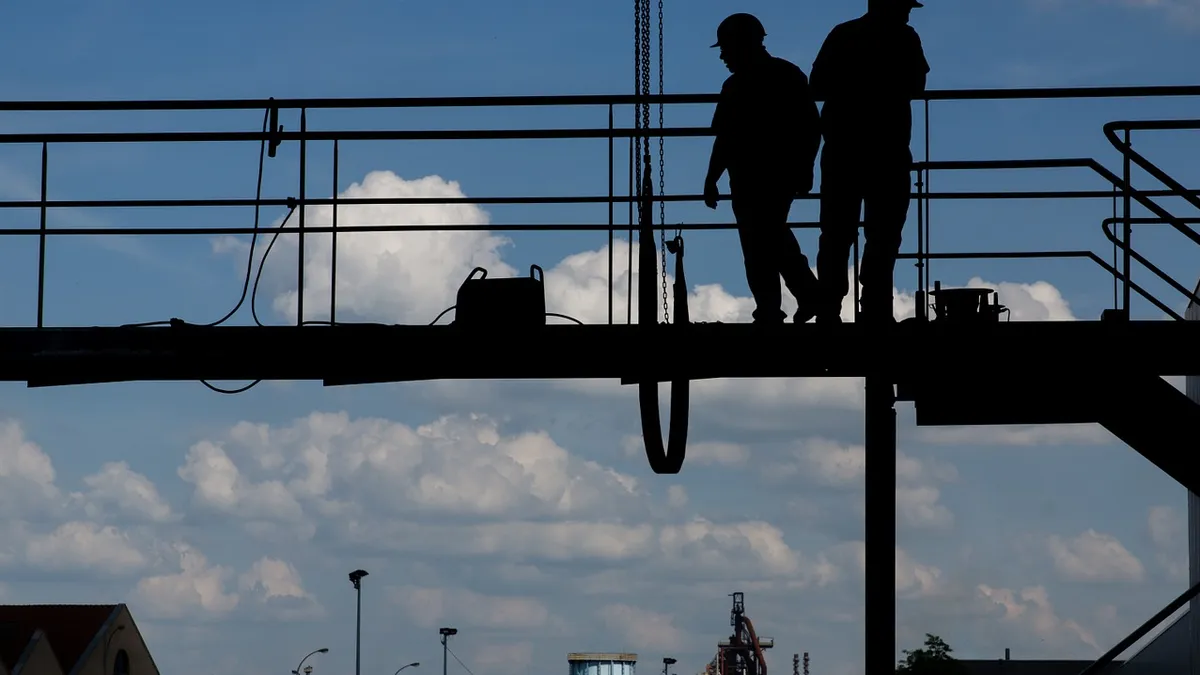Dive Brief:
-
Six in 10 single-family homebuilders said a significant number of older employees were replaced last year with younger, less-experienced workers, according to a joint survey of 298 builders by the National Association of Home Builders and Wells Fargo Housing Index based on payroll data.
-
Of those who reported the trend, seven in 10 said the younger workers require more observation for quality assurance and nearly all of them (six in 10) said that the need to monitor members of this group reduced efficiency and extended the time it took to complete projects.
-
The NAHB noted that the survey used payroll data from single-family builders and that much of the trade labor provided on job sites comes from subcontractors and their employees.
Dive Insight:
The trend of younger, less-experienced workers replacing their older counterparts will only continue as the industry navigates a persisting labor shortage and the latter group of workers readies for retirement.
Estimates put the industry at having lost 2.3 million workers — or more than 40% — of its workforce between April 2006 and January 2011. Beyond that, 60% of construction workers who lost their jobs during this time left the industry for another sector or departed the job market completely by 2013, according to the Bureau of Labor Statistics.
Although the skilled-labor shortage had been forecast to plateau in 2016, the industry saw no such relief. A national survey released this past summer of roughly 1,500 U.S. contractors polled by the Associated General Contractors of America revealed that 69% were struggling to find hourly skilled workers. A February report by the Bureau of Labor Statistics could fuel employer optimism, with the industry adding 58,000 jobs for the month — the most since March 2007.
With a renewed interest in the industry thanks, in part, to the promise of big-spending in construction through President Donald Trump's proposed $1 trillion infrastructure plan, firms could continue to see growth in their employee counts.
Beyond those already in the industry, more investment in vocational education could give a boost to the labor force, with programs like the NAHB's Home Builders Institute partnering with other industry groups, high schools, correctional facilities and the Department of Labor to provide training in the trades, pre-apprenticeship certifications and even job placement to help attract and maintain a steady flow of labor to the industry.
For more housing news, sign up for our daily residential construction newsletter.














